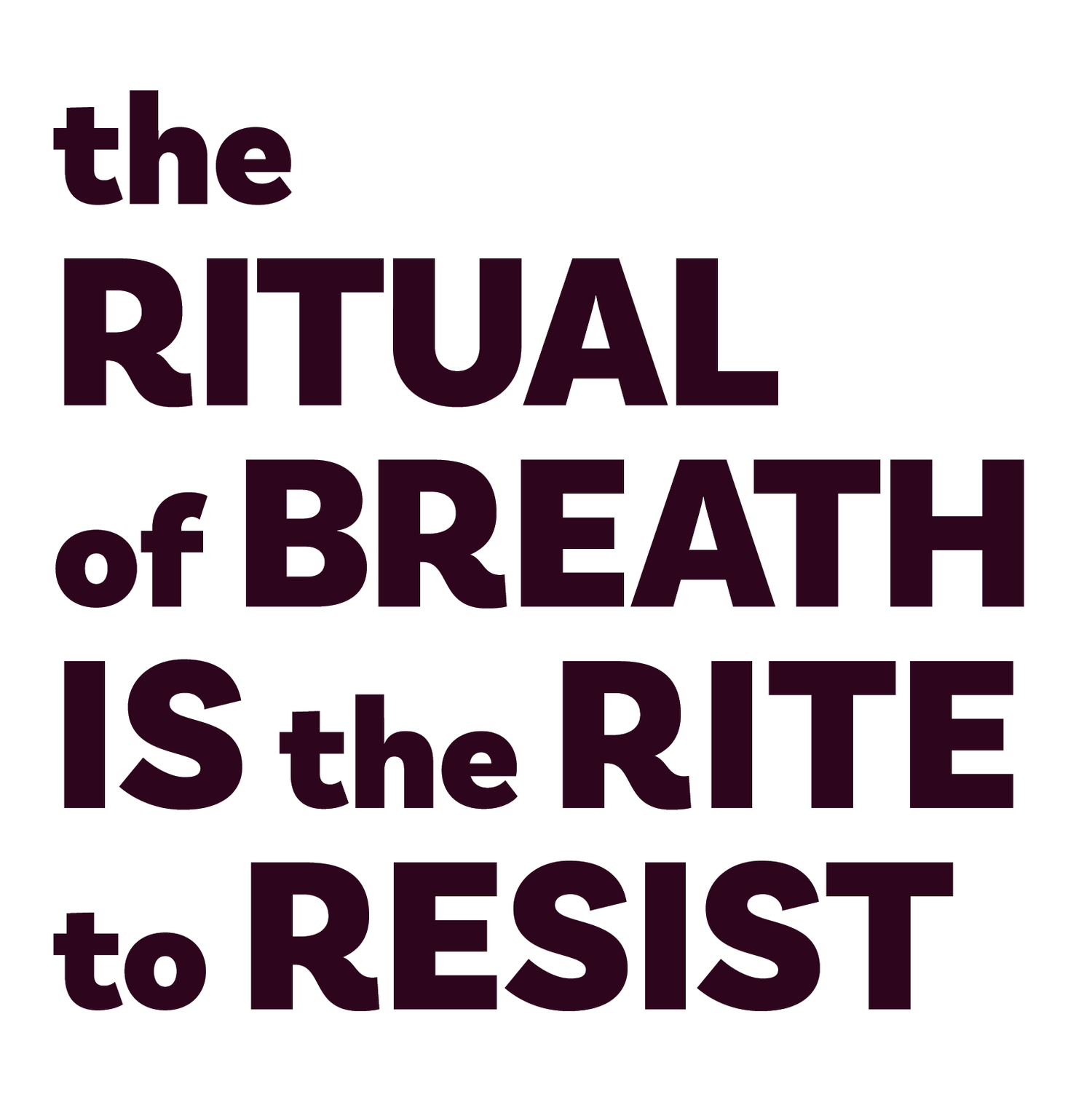
Ritual II
Fear / Among the Many More
Grounding
Fear. Among the Many More.
Call on your emotions.
Honor your emotions.
Contemplate your emotions.
Contemplation is your preparation. Preparation is your action.
Co-social Impact Director Dr. Shamell Bell offers today’s grounding.
I am open to care.
I connect with myself and others.
I am open to my feelings.
I am open to receiving. I am open to the present moment.
If our resistance is rooted in closing our disconnection, what parts of our connection are we afraid of?
Where are we scared of one another? What do we fear of ourselves?
These questions are offered by the Black Liberation Collective. View their Liberation Vocabulary, crafted to accompany the project.
Mantras
Questions
Self-led Activations
Text Making: We Are Recording
Librettist Vievee Francis uses Movement 2 of The Ritual of Breath Is the Rite to Resist to contemplate who we have lost and the fear that surrounds us, yet motivates us. She writes:
“There are so many / We are recording / We know the names.”
Grab a writing device and something to write on. Whatever is nearby. It could be a crayon and receipt—whatever material is handy. Write down what you have lost. Go with your gut, whatever comes to mind first. Write down what you have lost.
Today we will practice our ritual through an integration of text, image and sound. You can spend several minutes with this practice or several hours. Spend the amount of time that feels right for you. You can do one part of the ritual or all three, but they should be done in order.
Image Making: We Know The Names
We are going to make an altar around this writing. Dr. Shamell Bell, Co-Social Impact Director uses altar-making to set intentions.
Find a place near you to place your piece of writing. This place will hold your altar. Again, go with your gut, your first impulse. This is where your altar should be constructed. Place your writing there.
Take a few moments and consider what you have lost. What emotions does it bring up? Consider those emotions. Honoring those feelings, you are going to set an intention for your altar. Is your altar a place to sit with those feelings? Is your altar a place to consider the actions you will take in response to those feelings? Is your altar a place to call on different emotions? Make your choice.
Now begin to gather a few objects, two or three. These will be the first parts of your altar. Choose a few items that symbolize those things that you have lost and your intention to your altar. A photograph. Another piece of writing. A dried herb. A crystal/stone or leaf. Whatever you choose is right, because it is endowed with the intention of your choosing.
Place those objects on your altar or on our communal altar at the Hopkins Center. take a deep breath and make some adjustments if you want to. This is your altar. Know you can always add or make changes in the hours and days to come.
Visit this altar as often as you wish.
Music Making: We Are Recording
We are now going to embody our altars through sound. You can use voice or another object.
Visit your altar. At whatever timing it comes to you, start to make sound.
This could be an open vowel, like ‘o’, through your voice.
This could be a rhythm tapped out with an object.
This could be a chant of text.
Whatever sound emerges is the right sound for you, for that moment.
Continue to do this for as long as you want.
Visualization
Here is a visualization led by Director Niegel Smith. In this visualization we will consider the wider community of others all around us. You can listen to this anywhere, anytime, but we recommend sitting or lying down with your eyes closed.
Share your reflections
Share a thought, image, or video related to any of these rituals.
You can post it on Instagram and use #Ritualofbreath, or email it to us hopkins.center@dartmouth.edu.
We are gathering these reflections on this website as the work evolves and is shared with other communities.
